Sirtuin4 alleviates severe acute pancreatitis by regulating HIF-1α/HO-1 mediated ferroptosis
- PMID: 37865653
- PMCID: PMC10590376
- DOI: 10.1038/s41419-023-06216-x
Sirtuin4 alleviates severe acute pancreatitis by regulating HIF-1α/HO-1 mediated ferroptosis
Abstract
Acute pancreatitis (AP) is a common emergency of the digestive system and serious cases can develop into severe acute pancreatitis (SAP), which ortality rates up to 30%. Sirtuin4 (SIRT4) is a member of the sirtuin family, and plays a key role in inflammation and oxidative stress. However, the potential role of SIRT4 in SAP has yet to be elucidated. In the present study, we found that the expression level of SIRT4 in human AP was downregulated by screening a public database, suggesting that SIRT4 may play a role in AP. Subsequently, we used L-arginine (L-Arg) to induce SAP in SIRT4 knockout (SIRT4_KO) and SIRT4 overexpression (AAV_SIRT4) mice. The results showed that the pancreatic tissue injury and related lung and kidney injury were serious in SIRT4_KO mice after SAP induction, but were significantly reduced in AAV_SIRT4 mice. More importantly, we found that the levels of antioxidant factors GSH and SOD were decreased in SIRT4_KO mice, and the production of oxidative products and lipid peroxidation markers was increased, suggesting that SIRT4 was involved in inflammation and oxidative stress during SAP. Further studies showed that the absence or overexpression of SIRT4 affected the expression level of Hypoxia-inducible factor-1α (HIF-1α) after SAP induction, and regulated the expression of ferroptosis related proteins by mediating HIF-1α/HO-1 pathway. Collectively, our study revealed that SIRT4 plays a protective role in SAP by regulating the HIF-1α/HO-1 pathway to inhibit ferroptosis.
© 2023. The Author(s).
Conflict of interest statement
The authors declare no competing interests.
Figures
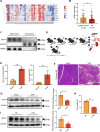
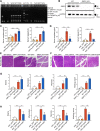
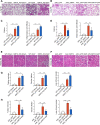
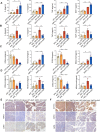

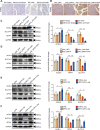
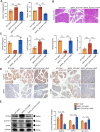
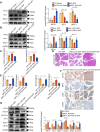
References
-
- Sendler M, van den Brandt C, Glaubitz J, Wilden A, Golchert J, Weiss FU, et al. NLRP3 Inflammasome Regulates Development of Systemic Inflammatory Response and Compensatory Anti-Inflammatory Response Syndromes in Mice With Acute Pancreatitis. Gastroenterology. 2020;158:253–69. doi: 10.1053/j.gastro.2019.09.040. - DOI - PubMed
Publication types
MeSH terms
Substances
LinkOut - more resources
Full Text Sources
Medical
Research Materials
Miscellaneous

